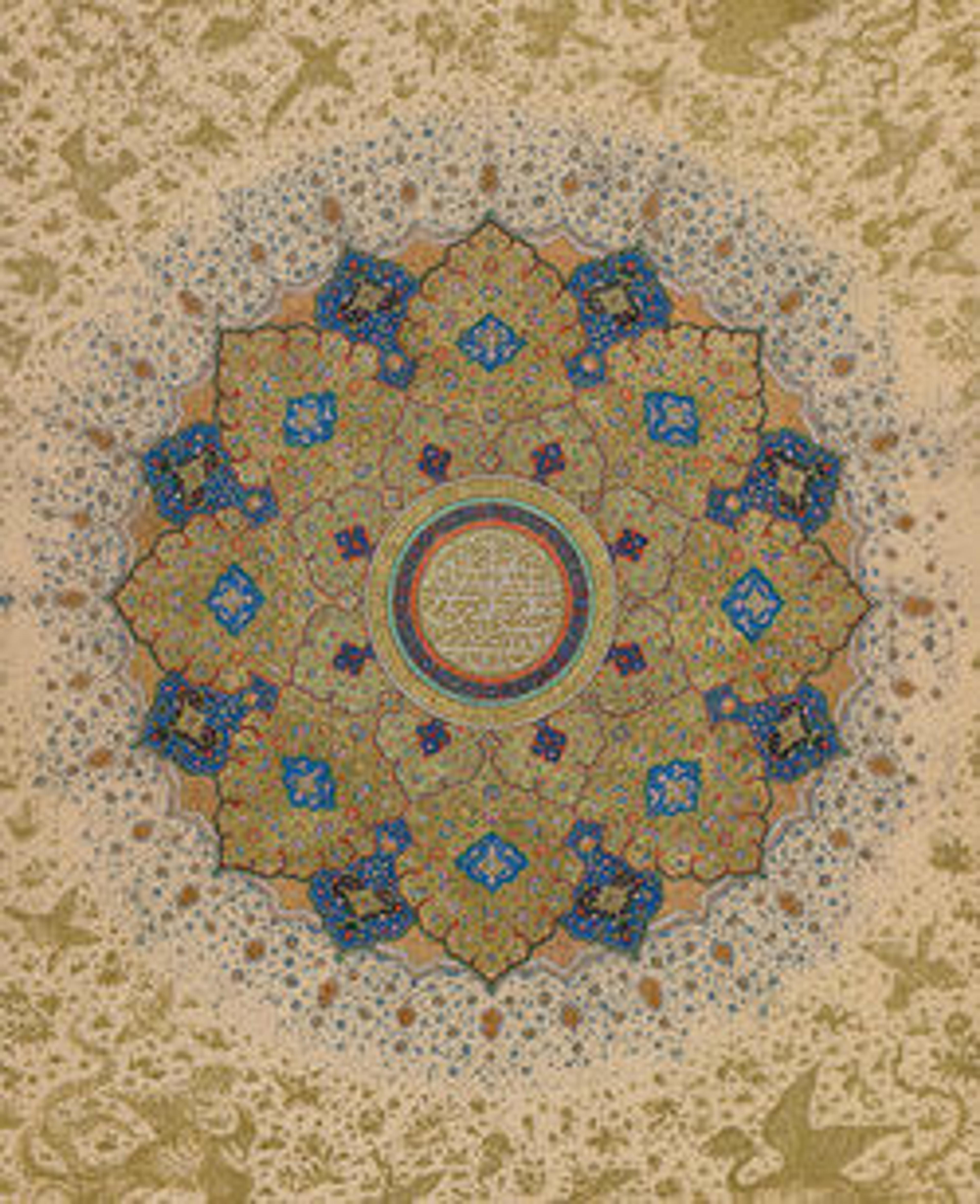Dish with 'Cintamani' and Tiger-stripe Pattern
The pattern of this charming dish is a variant of the so‑called chintamani (Sanskrit for "auspicious jewel") design. Appearing on ceramics as well as on carpets and textiles, this pervasive design originated in Buddhist iconography. Originally, the circles and wavy stripes represented auspicious flaming pearls, but in the Ottoman context this significance was transformed through their association with tiger stripes and leopard spots, symbols connoting strength and courage.
Artwork Details
- Title:Dish with 'Cintamani' and Tiger-stripe Pattern
- Date:ca. 1575–90
- Geography:Made in Turkey, Iznik
- Medium:Stonepaste; polychrome painted under transparent glaze
- Dimensions:H. 1 15/16 in. (4.9 cm)
Diam. of rim: 10 3/16 in. (25.9 cm) - Classification:Ceramics
- Credit Line:Gift of William B. Osgood Field, 1902
- Object Number:02.5.55
- Curatorial Department: Islamic Art
More Artwork
Research Resources
The Met provides unparalleled resources for research and welcomes an international community of students and scholars. The Met's Open Access API is where creators and researchers can connect to the The Met collection. Open Access data and public domain images are available for unrestricted commercial and noncommercial use without permission or fee.
To request images under copyright and other restrictions, please use this Image Request form.
Feedback
We continue to research and examine historical and cultural context for objects in The Met collection. If you have comments or questions about this object record, please contact us using the form below. The Museum looks forward to receiving your comments.
